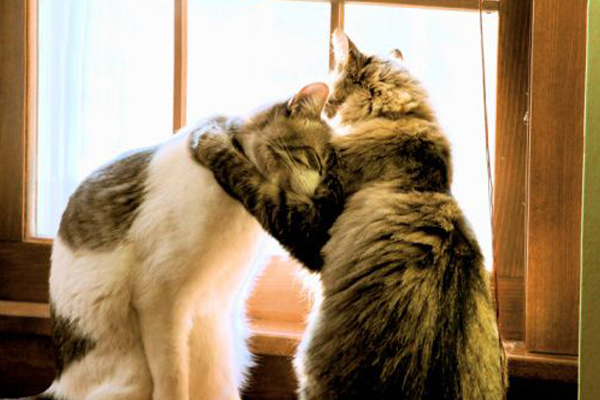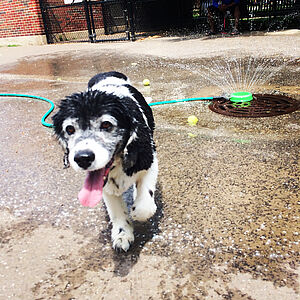Shining a Light On Pets and Grief
by Emily Marron | Nov 01, 2014
Anyone who has lost a pet knows the incredible grief and pain that comes with it. But what about when a pet experiences a loss, how do they grieve? And what can we do to help them through the process?

Grey Areas In Grief
What we understand about grief is a human emotion and the idea that animals feel emotions in the same way as humans can cause controversy. Behaviorists, who rely on quantitative data, believe if you can’t measure it, you can’t prove it. On the other side, those who believe that while we can’t ask our pets how they feel, there’s enough qualitative data to know something is going on. Observations of changes in behavior prove our pets are feeling something. This is the viewpoint of many veterinarians and the one taken in this article.
What Causes A Pet To Grieve
There are two main triggers that cause pets to grieve. The first is the loss of a companion, human or animal. Examples include the death of an owner or another family pet. The second is a loss in consistency. Pets can grieve even if their owner hasn’t passed, but they experience a social loss or a change in environment. Common examples of this are moving to a new home or a pet being surrendered to a shelter.
How Pets Grieve
There is no easy or right way to describe how pets grieve. Ask a psychologist about the human grieving process and they’ll often tell you things like “we’re all different” and that there’s “no right or wrong way to grieve.” The same applies to our pets. Animals tend to grieve differently, even within the same species. The main sign of grief to look for is a change in your pet’s behavior. Some common signs include decrease in appetite, lethargy and loss of interest in activities.
Every dog or cat is different. A Basset Hound whose natural behavior is on the sedative side might exhibit an increase in activity. This could be a sign he is looking for whomever is missing. Your retriever who you thought would never lose interest in fetch may not even lift his head at the sight of a tennis ball. The same cat that used to curl up in your lap every night might now spend most of his time alone. Usually the grieving period lasts around a month, until the dog or cat adjusts to the loss and the changes that come with it.
Dr. Sara Bennett, DVM, DACVB, Veterinary Specialist at VCA Berwyn Animal Hospital, points out that at times, changes in behavior following a loss can be a sign of an additional problem. For example, if a home has two dogs and one passes, the owner may discover that their dog has separation anxiety that has been kept under control by the presence of another dog. When this happens or any change in behavior lasts longer than a month, it is best to reach out to a professional for advice in addressing the new behavior.
What We Can Do To Help
Dr. Bennett says, “The most important thing you can do for a grieving animal is keep his environment and routine as consistent, predictable and as close to unaltered as possible.” This means keeping things like feeding times, walks and other interactions as they were prior to the loss.
In the case of location change, bringing something with the familiar smells of the old environment, like bedding that hasn’t been washed or a favorite toy, can help a dog or cat transition. Cats are even more attached to their environment and may experience a higher level of stress with a move.
PAWS Chicago sees pets experiencing both types of loss at once when an owner has passed, leaving the pet homeless, or when the animal has been relinquished. Either way, the pet is experiencing the loss of their owner along with the stress of changing environments. In these situations, PAWS often relies on a network of foster homes to help these animals transition. Usually these pets don’t have the benefit of bringing a familiar item with them into their new environment. The best thing the new caregiver can do is keep the new environment as low stress as possible and do their best to manage noise and interactions.
Concluding On Consistency
When we lose a pet, there are multiple aspects of our life that remain unaltered. We still live in the same home, get our food from the same sources and find comfort in the people we know and love. When a pet loses a loved one, not only are they going through a time of grief, but often a period of change. It is up to us as caregivers to help keep pets’ lives as consistent and low stress as possible as they adjust to change brought on by loss.

Four-year-old Cocker Spaniel, MiMi, from PAWS Chicago's Crisis Care Foster Program, taking comfort in the familiarity of a tennis ball.
